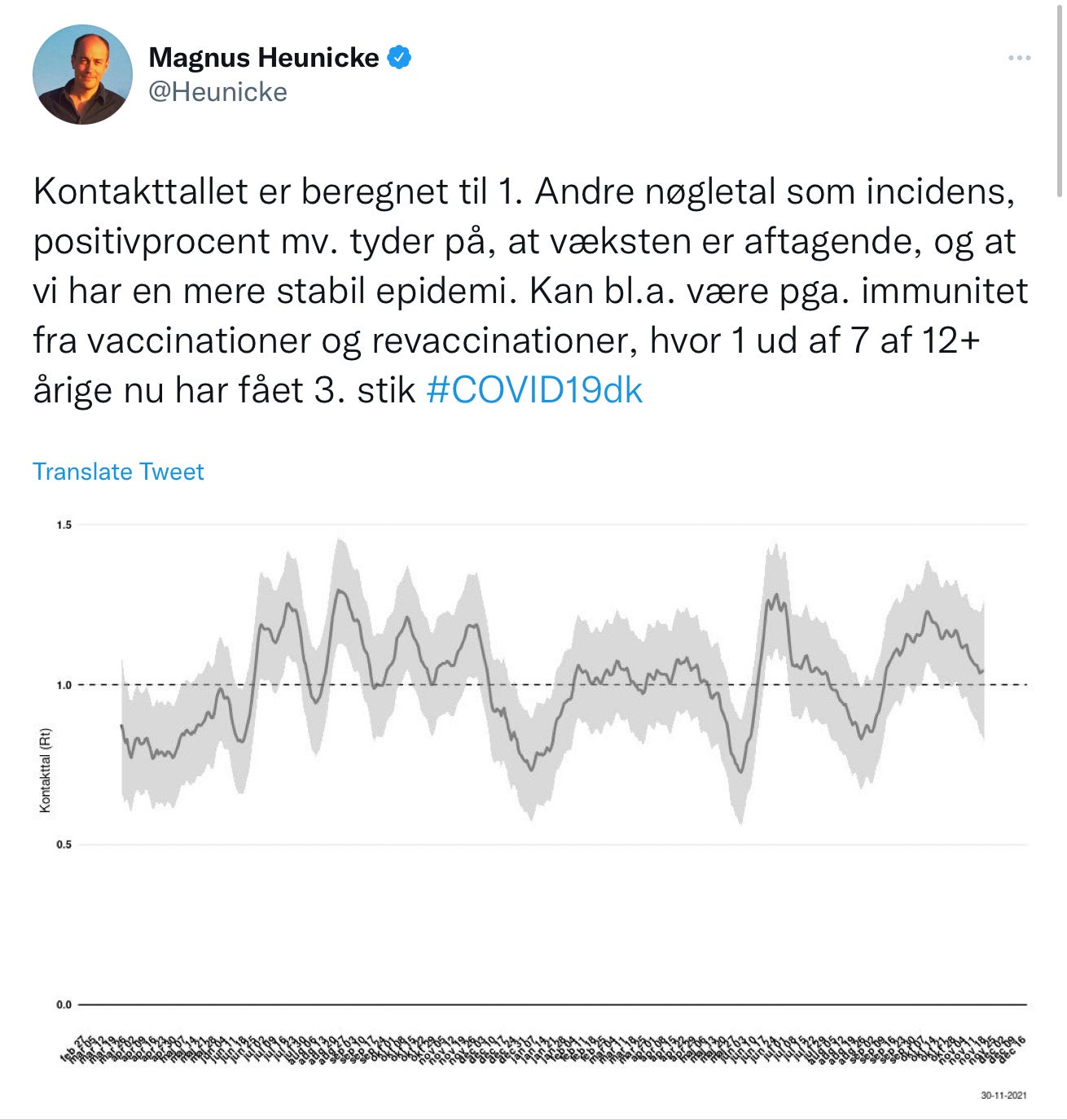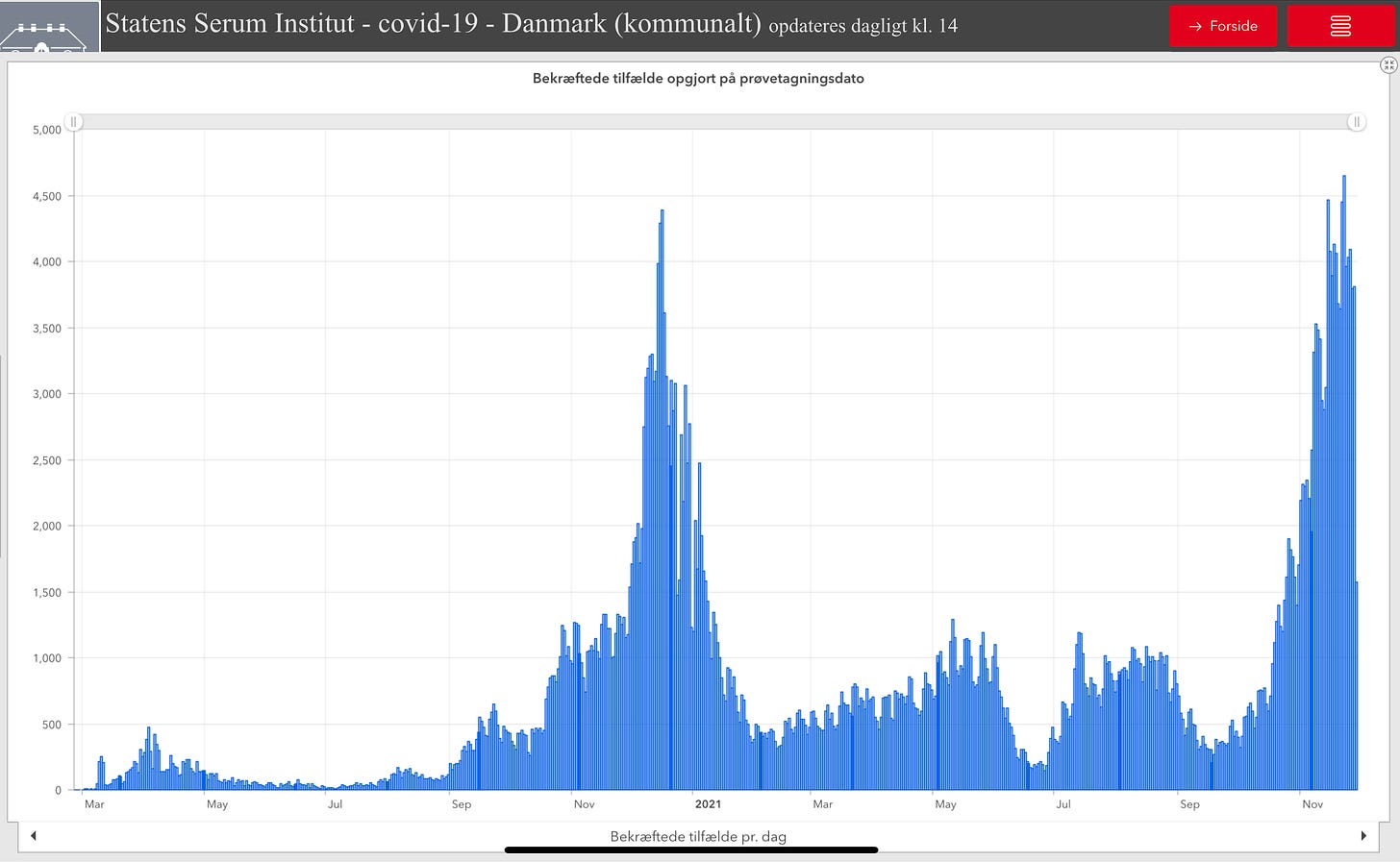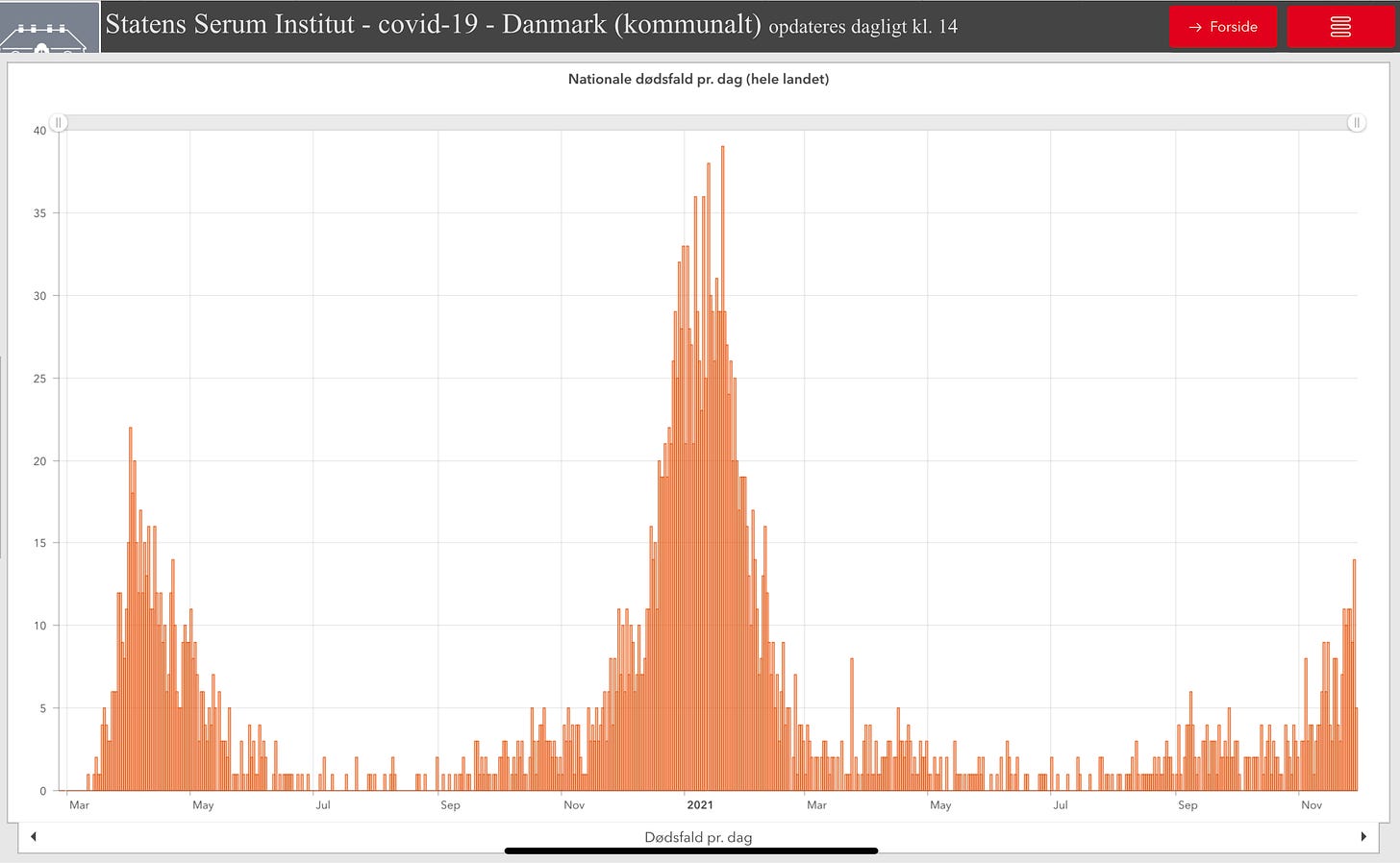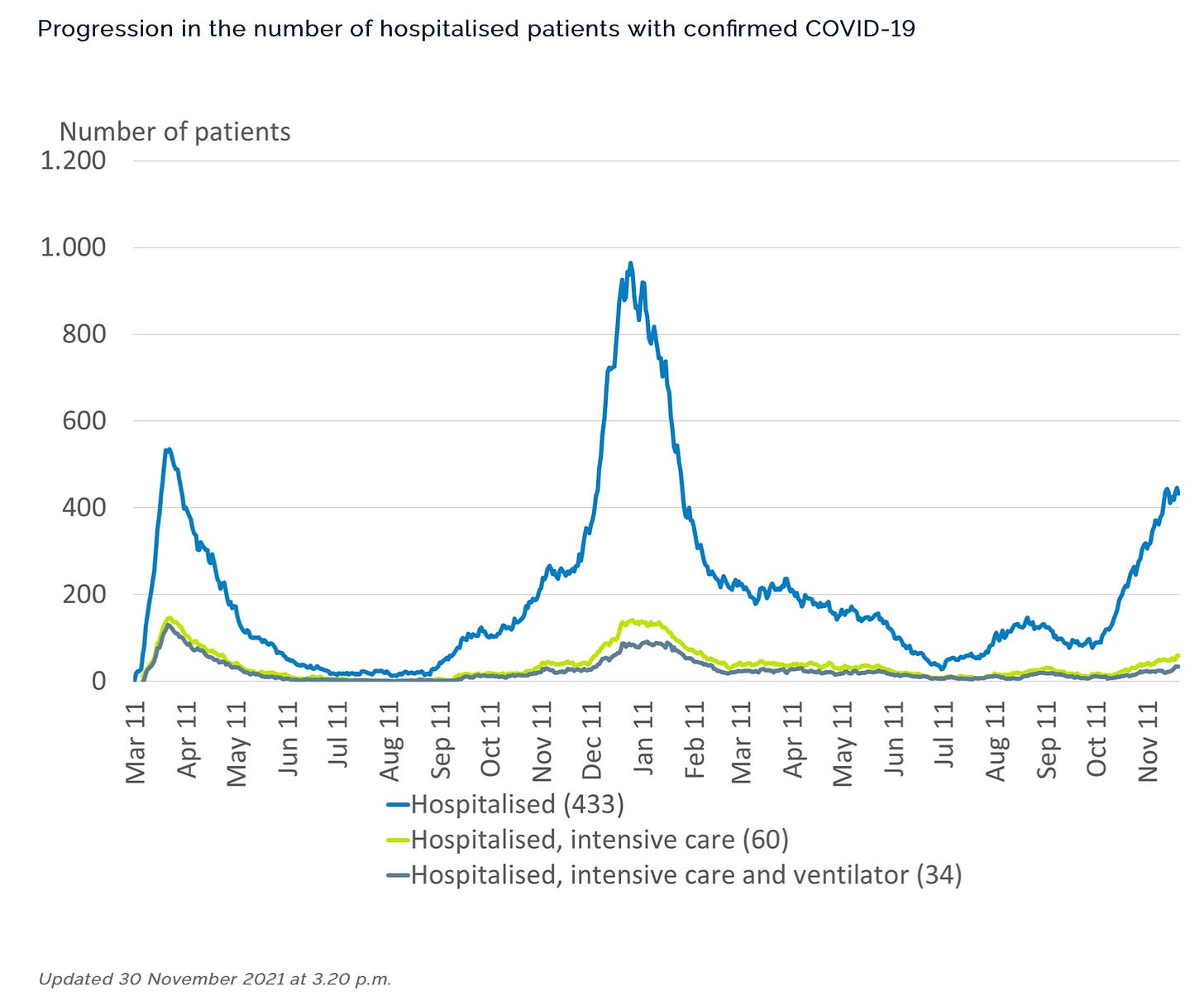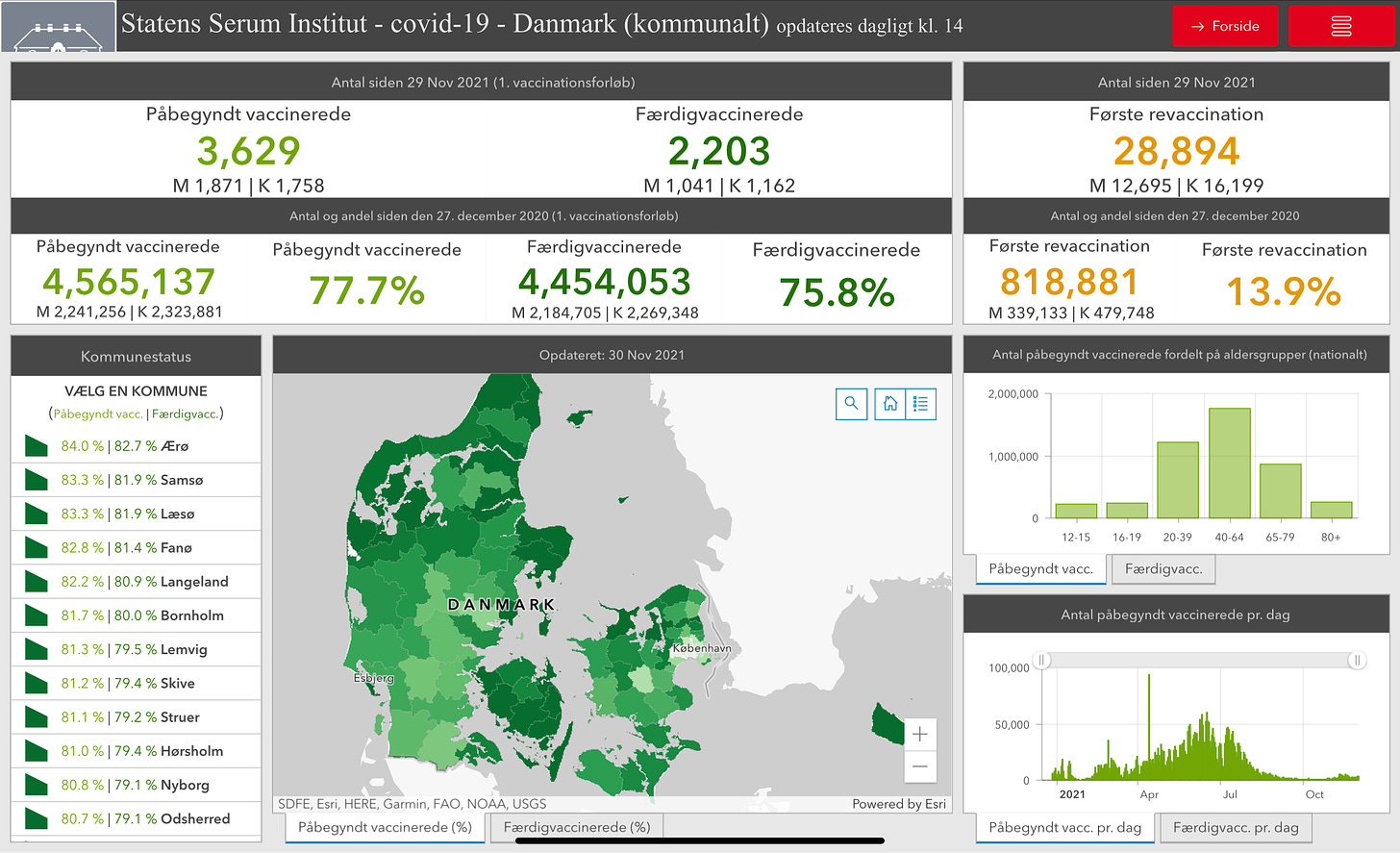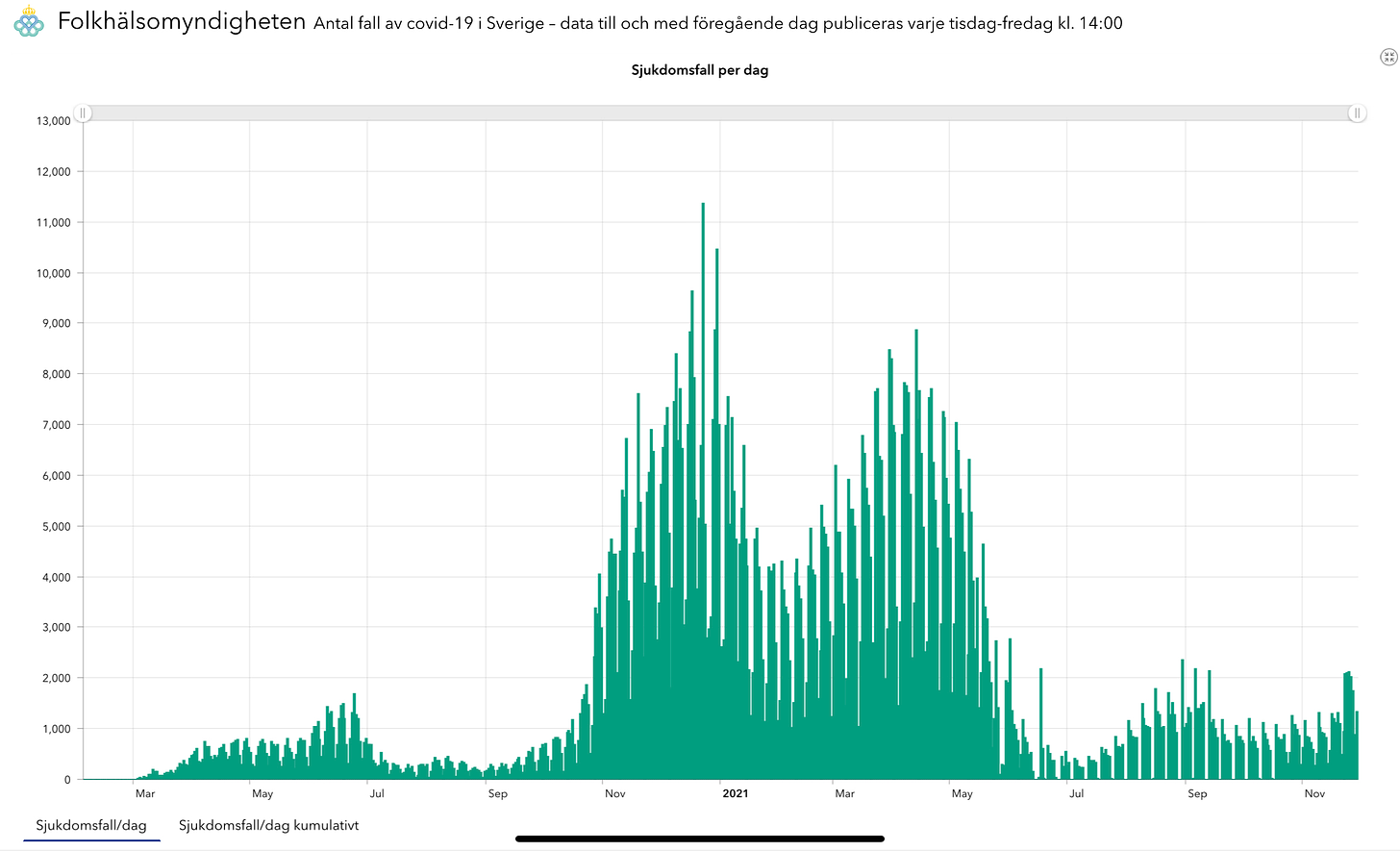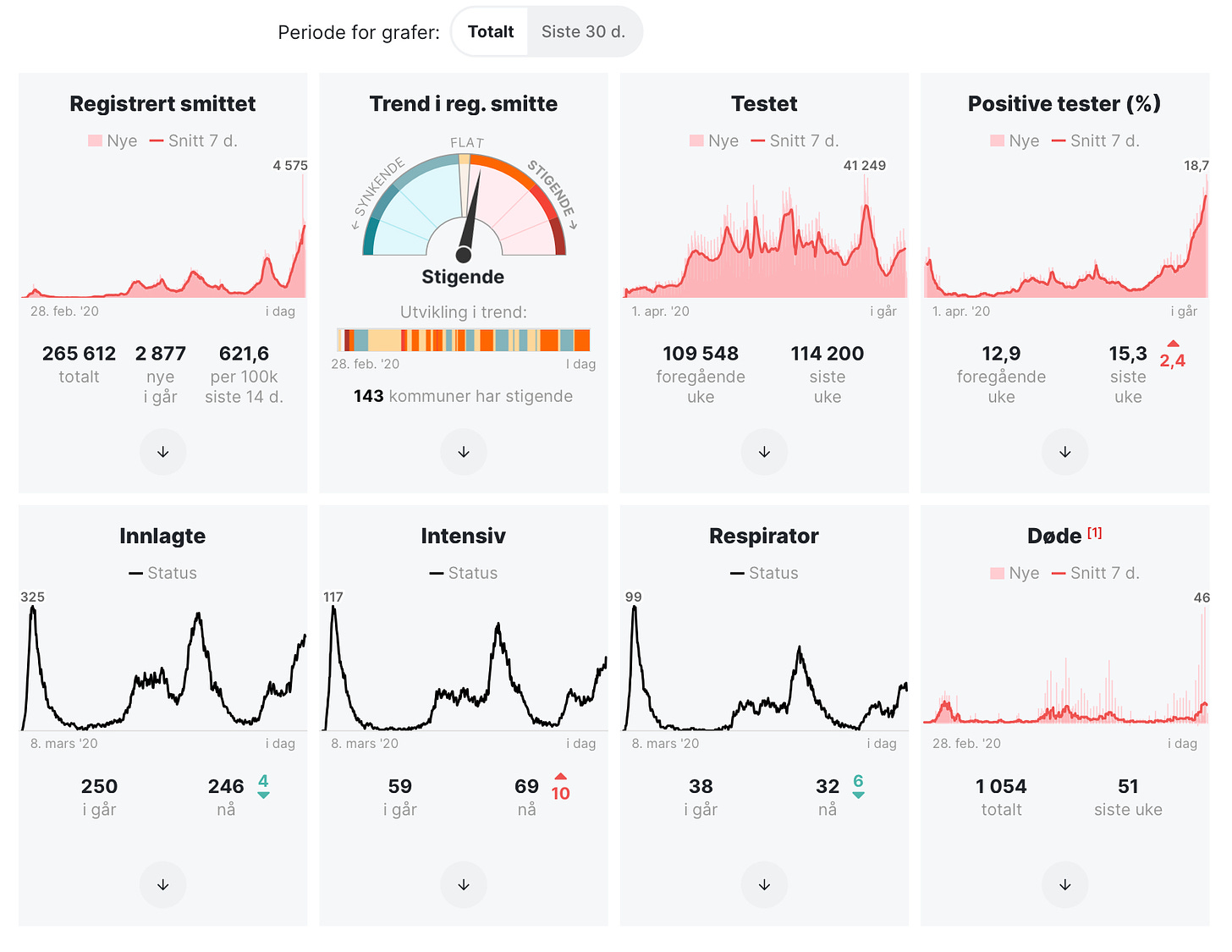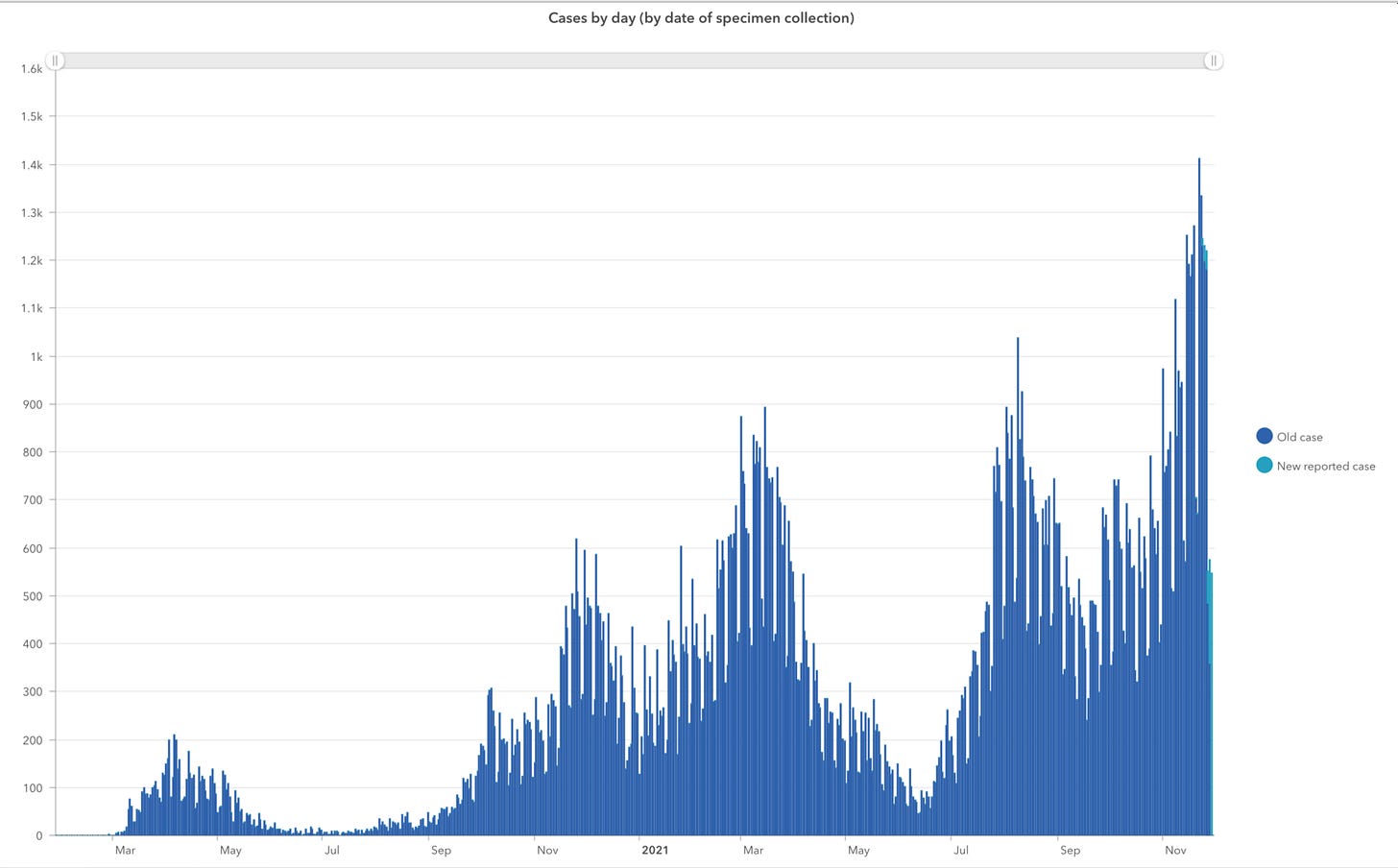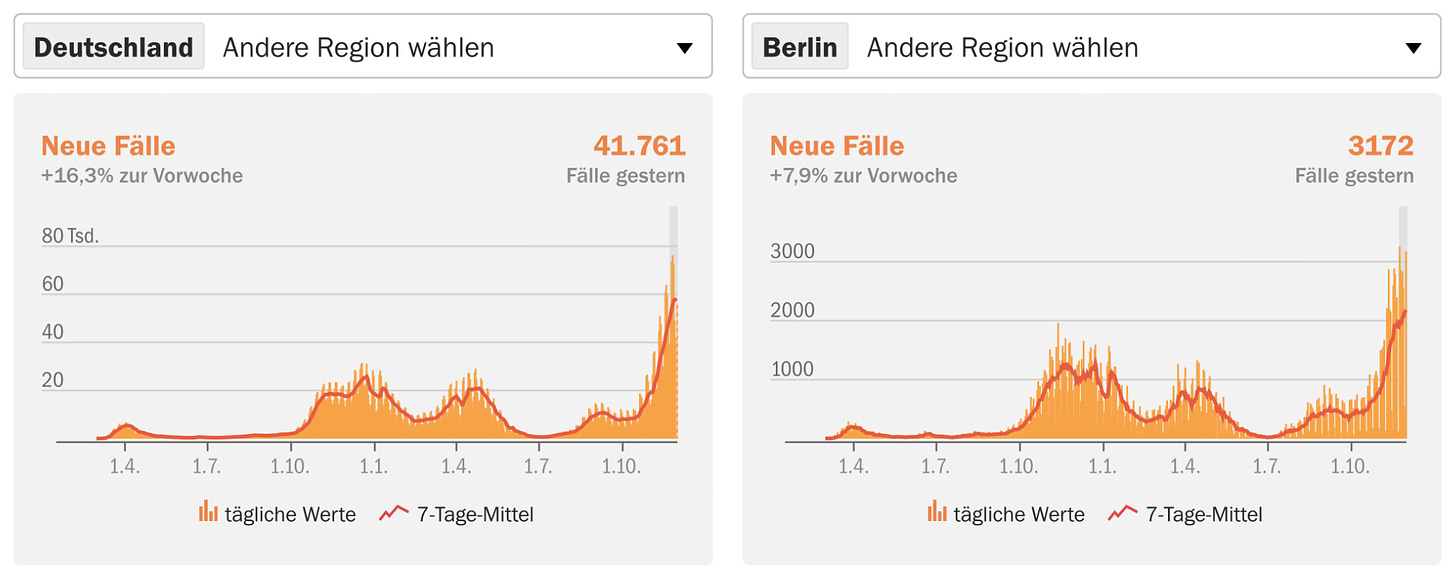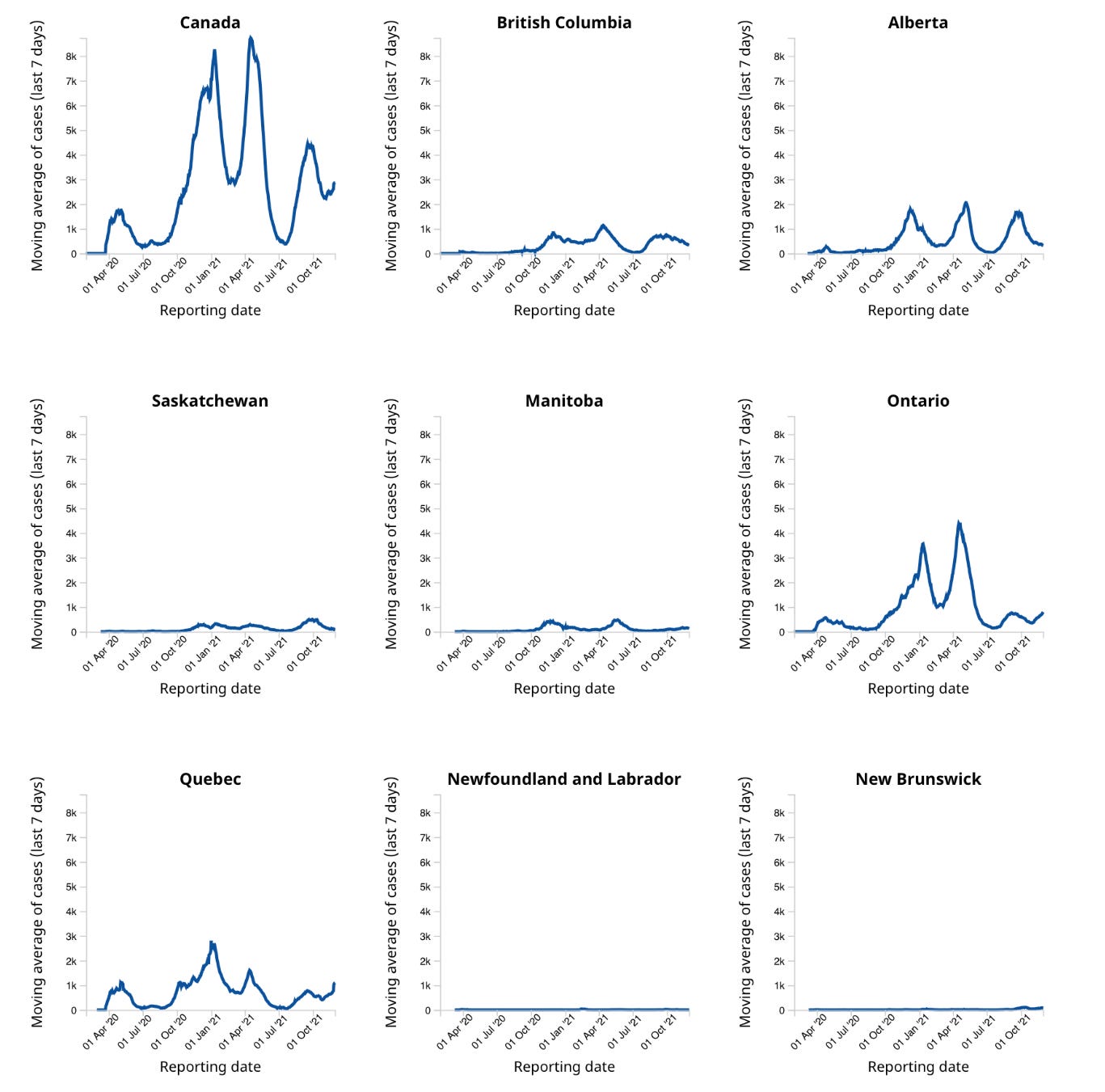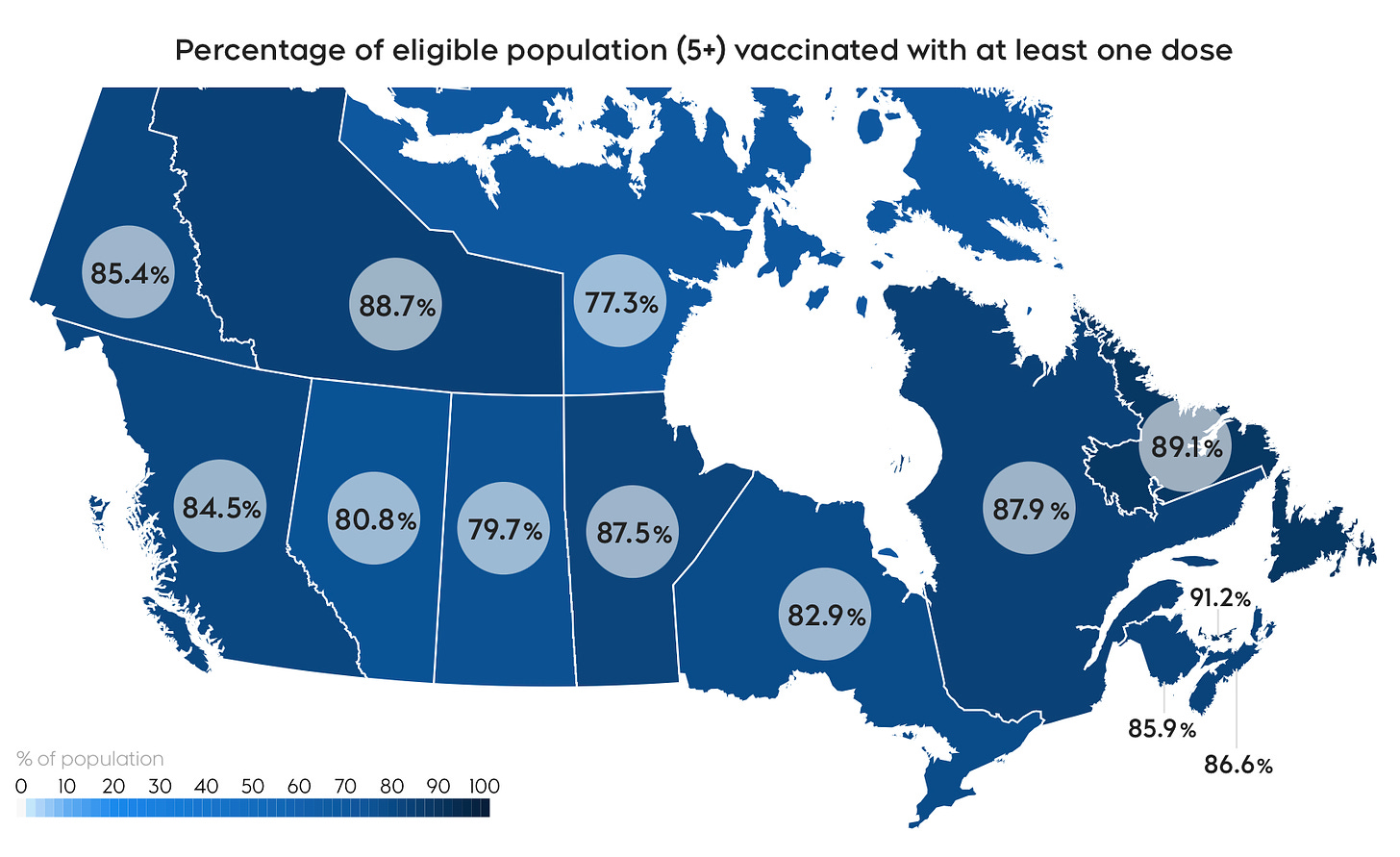🇩🇰
Over the weekend, Denmark confirmed its first two Omicron COVID variant infections, and those numbers will continue to rise. The Staten Serum Institut confirmed another two variant infections on Tuesday, making four cases total to date. The agency also said it had another eight suspected Omicron variant infections awaiting genome sequencing test results to come back.
All four variant infections so far have been linked to travel to South Africa.
-
False alarm at an Odense school, which was ordered closed late Sunday night after fears a student’s positive test might be an Omicron variant infection. Odense Kommune says that genome sequencing came back positive for the Delta variant, not the Omicron.
Rasmus Rask Skole School Principal Lasse Bach Sørensen
“It is with relief that today we have received information that the infection, which was suspected to be a new corona variant, is fortunately the well-known Delta variant. Now we can quickly return to normal life again. During the [Tuesday] afternoon, all parents and students will be notified via Aula classes will resume and the school will reopen.”
The Danish Agency for Patient Safety had ordered the school closed late Sunday night and enacted strict protocols due to Omicron fears. It meant the entire school population including staff and their close contacts, had to go into quarantine and take a number of COVID tests. That urgent response has now been scaled back to the usual corona guidelines governing infections in schools, which means in most cases a quarantine is no longer required.
-
In the last two days, the Danish Agency has ordered more students to go home at three different schools due to COVID outbreaks. . All three are in Sjælland. In Copenhagen students in grades 0 to 4 at Langelinieskolen have had their classes ordered closed. In nearby Tårnby 1st grade and the SFO program has been temporarily shuttered. And across the island at Kalundborg Friskole, all students in grades 0 through 7 as well as grade 9 have all been sent home.
-
Denmark has added Angola, Malawi and Zambia to its list of high risk counties due to the Omicron COVID variant. As of Tuesday morning, the three countries have been deemed high-risk red zones triggering a number of travel restrictions. All direct flights between the three countries and Denmark are banned, which is easy because there aren’t any. All travelers from COVID red zones can only enter Denmark if they are a citizen, permanent resident, or have a ‘recognizable purpose.’ In all cases, a negative PCR test is required before boarding. On arrival another test is required within 24 hours and a ten day quarantine must be served. This extends to anyone who has been in any of the red zone countries in the 10 days prior to entering Denmark.
Danish health authorities are also asking anyone who is already in Denmark who has been in Angola, Malawi, and Zambia since November 16 to isolate themselves and get a PCR test right away. They can only come out of quarantine with a clean sweep of negative COVID tests taken on days four and six of isolation.
-
Denmark’s Health Minister Magnus Heunicke says the COVID contact number (reinfection rate or R0) has declined slightly to 1 after four weeks of being at 1.1. Heunicke adds that other indicators like the incidence rate and positivity percentage are all suggesting slowing infection growth and a more stable epidemic situation.
The health minister attributes this to increasing vaccination numbers, especially for booster doses, and the beginning of the effort to vaccinate children. He says one in every seven people 12 years old and older in Denmark has now had a booster shot.
-
Denmark is reporting 4,148 COVID infections and 12 more coronavirus deaths in the last day.
Yesterday, there were 360,904 total corona tests done, of which 160,583 were PCR tests equaling a positivity percentage of 2.58%.
-
The number of coronavirus deaths in Denmark has been increasing. In the last week, a total of 75 lives have been lost to the virus as daily fatality numbers noticeably increase, often in excess of ten a day.
-
COVID hospitalizations (433) have dropped (-13) while the number of infected people in an ICU (60) remains unchanged and of those in intensive care on a ventilator (34) also remains unchanged day to day.
-
The Danish National Health Board is recommending that COVID testing be increased within the healthcare system. Specifically, it wants COVID testing for all patients admitted to intensive care, any patient who might be in a hospital or health facility for more than 24 hours, and anyone getting a procedure “that presents a particular risk of spreading the infection.”
Chief Physician Bolette Søborg:
“When we test more patients, we can better limit the spread of coronavirus in the healthcare system. The infection increases make this necessary. At the same time, it is important that increased testing does not prevent people who need treatment in hospital from receiving care. If it has not been possible to get a test result before, you can therefore still be admitted and treated at the country's hospitals.”
-
On the vaccination front, there were 34,726 total inoculations yesterday. While most (28,894) were booster shots, 3,629 people had their 1st vaccine dose on Sunday, which is good news.
So far, 77.7% of the total population have had one dose, 75.8% have had two, and 13.9% have had a vaccine booster dose.
.
The Danish National Health Board has changed its position on COVID immunity via previous infection or by vaccination. Previously, the board has stated that surviving an infection or getting vaccinated provides 12 months of immunity from the virus. Now the board is backing away from a definitive timeline and instead saying “it is difficult to say exactly how long you can be protected.”
Chief Physician Bolette Søborg:
“Different people get different degrees of protection, and especially after an infection, it is very different how strong the immune response is. The protection also decreases over time, and is generally lower for the Delta variant than other variants.”
-
Region Syddanmark is expanding its rapid testing capacity and will have another 18 rapid testing sites open by the end of the week. That will expand to 43 the number of rapid testing facilities in Southern Denmark’s 22 kommunes.
-
The Danish government is preparing a financial aid package for hospitals that are under strain from COVID and other infections, hospitalization numbers, and stressed-out staff.
Finance spokesman Christian Rabjerg Madsen spoke to Ritzau:
“We recognize the significant challenges and pressures that the healthcare system is facing. The plan is for it to take effect as soon as possible. I will not go further into concrete initiatives or finances. But I can only say that we recognize that there is pressure on the overall healthcare system at the moment. Therefore, we also see a need to take initiatives.”
-
According to DR, a coronavirus outbreak is spreading at Kragskovhede Prison in North Jutland. 13 inmates have tested positive so far.
-
Anyone who was at a DJ Martin Jensen show at the Aalborg Congress and Culture Center should get COVID tested ASAP. The Danish Agency for Patient Safety says someone at the concert tested positive for a suspected Omicron variant infection. It estimates there were about 1,600 people at the concert, but they also have to focus on their close contacts.
-
The Danish government will donate another 3.7 million vaccine doses to the international vaccine collaboration, COVAX. According to the Danish Ministry of Foreign Affairs, that makes just over 10 million vaccine doses donated to date.
🇸🇪
Sweden has added 6,011 infections and six more corona deaths since its last update on Friday.
To date, 7,580,661 1st vaccine doses (83.9% of pop 12 years old and older) and 7,134,359 2nd doses (79%) have been administered.
*Vaccination data note* Sweden has now amalgamated vaccination statistics for everyone 12 years old and older.
The Swedish Public Health Agency has not updated booster dose numbers.
-
On Monday, Sweden confirmed its first Omicron variant infection after a traveler, who lives in Region Skåne, who was recently in South Africa tested positive for the new strain. Today the Swedish Public Health Agency said it has confirmed two more Omicron infections, both in Stockholm. In both cases the people had recently been in South Africa and had returned to Sweden about a week ago.
Agency Director Karin Tegmark Wisell:
“It was expected that we would find the variant in Sweden because it has been confirmed in so many other European countries. The information we have about the variant means that we must take it very seriously until we can learn more about it. Measures for travelers from southern Africa have been tightened since Friday and the latest developments are now being closely monitored through intensified surveillance in accordance with the WHO's and ECDC's recommendations.”
Since Friday, Sweden has required that travelers from southern African countries be tested on arrival, go into a seven day isolation, with a second test on day five. Today those requirements have been tightened, with the testing mandate extended to all travelers from preschool age and up who have spent seven or more days outside the Nordic region regardless of vaccination status.
“It is important to take further measures to be able to detect cases early, so that infection control measures can be implemented. The Swedish Public Health Agency is following developments, but more knowledge is needed about the new virus variant. The most important thing anyone can do to counteract COVID and its consequences, regardless of variant, is to get vaccinated.”
In Sweden, all positive test results for people who have been traveling are being sequenced to screen for Omicron and other variants. Overall Swedish authorities screen only about 40% of all domestic positive test results.
-
Another report to add to the pile, all concluding Sweden’s COVID strategy was a failure. The Royal Swedish Academy of Sciences released its assessment on Tuesday and concluded.
“The Swedish pandemic strategy has probably contributed to Sweden’s considerably higher rates of infection, illness and death compared to Denmark, Norway and Finland.”
The report says Sweden’s pandemic response was largely late, insufficient, and failed to learn from its mistakes or from the lessons provided in the pandemic response from the countries around it.
“The extensive morbidity and high mortality rate Sweden experienced during the first two waves of the pandemic were primarily due to measures that were too lenient and too late to prevent the initial spread of infection. In other cases, information from [Sweden's Public Health Agency] had been contradictory and subjective. One example is FHM's objection to the use of facemasks, as well as an early disregard of the risk that individuals with presymptomatic or asymptomatic infection could be contagious."
The academy makes 15 recommendations in its report.
“The Expert Group proposes that Sweden establish an independent expert unit with a high level of scientific expertise in relevant areas. The unit will provide the Government, responsible politicians and public authorities with updated scientific information and advice on pathogens, the spread of infection, measures for infection control, the implementation and harmonization of testing methods, vaccination strategies and communication on these subjects.”
The report can be found HERE.
🇳🇴
Norway has added 4,691 infections and four more pandemic deaths since yesterday’s update.
COVID hospitalizations (246) are down (-4) while the number of infected people in an ICU (69) are up (+10) of those the number on a ventilator (32) is down (-6).
To date, 78.6% of Norwegians 12 year old and older have had one vaccine dose, 71% have had two, and 10.5% have had a booster dose.
-
The Norwegian Public Health Institute has three suspected Omicron variant infections. It has mandated that everyone from southern African countries arriving in Norway must get a PCR COVID test and three positive results from Ullensaker municipality have set off alarm bells.
Department Director Line Vold:
“It is too early to say yet whether these people are infected with the Omicron variant or not. The most important thing now is that those who are infected and their close contacts follow the rules of isolation and quarantine. We expect to have the first results of the tests ready by the end of tomorrow. We will report back to the municipal doctor when the results are available.”
All three of the people suspected of having an Omicron variant infection flew into Norway and landed at Oslo Airport.
Under tightened rules in Norway travelers from South Africa and neighbouring countries are tested and quarantined in government isolation facilities.
-
As Norway battles its most severe infection wave yet, the country’s Prime Minister, Jonas Gahr Støre, has announced COVID restrictions will be tightened. While final details have yet to be announced, the Prime Minister said if one person in a home is infected then everyone in the home must quarantine pending a negative COVID test regardless of vaccination status. How often you are tested and how many negative tests will result in ending quarantine will depend on whether a person is vaccinated or not.
-
The less education you have and the poorer you are, the harder the pandemic hit you in Norway, according to a new study. The Norwegian Institute for Public Health says those with minimal education and at the lower end of the income scale were over-represented among coronavirus infection numbers, hospitalizations, the people who had to be ventilated, and ultimately among those who died.
The study looked at statistics from February 2020 until May 2021 examining the pandemic’s impact among different socio-economic groups.
Study Advisor Kristian Bandlien Kraft:
“The pandemic impact shows differences by education and income groups. The tenth of the population with the lowest household income had about twice as many confirmed infections and hospitalizations per 100,000 people as the tenth with the highest household income.”
The trend was virtually identical when looking at a person’s education levels.
The study authors even adjusted for age, gender, municipality of residence, and country of birth, and while the numbers moved around a bit, the core conclusion remained the same.
There was one anomaly in the study, as the authors note, in March of 2020, people with the highest education and largest income were over-represented among infections and hospitalizations.
“We assume that this is largely due to the fact that the first people who became infected were infected on holiday in Austria and Italy, and that many of these are people with a long education and a high income.”
🇫🇮
Finland has registered 916 new infections with no new virus deaths since yesterday’s update.
So far, 76.3% of the total population have had one vaccine dose, 71.9% have had two doses, and 4.7% have had a vaccine booster shot.
-
The Finnish government met today to discuss what could be done to wrestle down the country’s infection curve. However, the Prime Minister, Sanna Marin, had to attend remotely as she is quarantined at home waiting for a COVID test result due to suffering some flu symptoms.
-
Finland has two suspected Omicron infection cases awaiting genome sequencing test results for a final determination.
🇩🇪
Germany’s Health Minister Jens Spahn says the number of vaccinations done this last weekend have more than quadrupled compared to the weekend before. Spahn says 9.2 million people in Germany (13.1%) now have received a booster vaccine dose.
Germany had over 40,000 infections yesterday and today added at least another 55,809 and 241 more virus deaths.
🇳🇱
Dutch health authorities said on Tuesday that the Omicron COVID variant had been present in the Netherlands at least a week earlier than was previously thought. COVID testing has now been stepped up in the country and previous positive tests are getting another look just in case. The news also means the variant has been circulating out in the world for at least a week, but probably more, before everyone hit the panic button last Friday.
WHO 🦠
The World Health Organization has updated its threat assessment of the Omicron variant, and it doesn’t sound good. The agency says given the strain’s mutations “and immune escape potential” it rates the likelihood of global spread of the variant as high. Although it notes “considerable uncertainties” about the extent of immune escape the variant might have. That said, it adds that currently available vaccines still offer high protection against severe infections, hospitalization, and death.
“Depending on these characteristics, there could be future surges of COVID, which could have severe consequences, depending on a number of factors, including where surges may take place.”
The WHO says those consequences could include overwhelming healthcare systems, increasing corona deaths, and a substantial impact on vulnerable populations, especially in countries with low vaccination rates.
To date, no deaths linked to Omicron variant have been reported.
The global healthcare agency is asking countries to enhance testing, genome sequencing of positive results, and overall virus surveillance. It also wants vaccinations to be increased, especially among vulnerable populations.
It also encourages people to wear face masks, maintain social distancing, make sure indoor spaces are ventilated, and avoid crowds.
-
If you are over 60 years old or are in a high risk vulnerable population then do not travel. That is the message from the World Health Organization on Tuesday. The global health agency says the threat posed by the new Omicron variant is such that people need to take steps to protect themselves. It says people with cancer, diabetes, or heart ailments are among those who should stay put for a while. The WHO is asking all countries to also urge their seniors and vulnerable citizens to avoid travel right now.
🇯🇵
Japan has confirmed its first case of the Omicron variant a day after it closed its borders to all foreign travelers in a bid to keep the coronavirus strain out.
🇨🇦
The Canadian government has announced that all travelers arriving by air, unless they come from the United States, will have to be tested on arrival and isolate in “designated facilities” until a result comes back.
-
Canada reported 2,332 COVID infections and another 27 corona deaths yesterday. Nationally, the infection curve is rising again, driven by rapidly increasing numbers in Ontario and especially in Quebec.
On the vaccination front to date, 30,570,260 1st doses (79.95% of the total population) have been administered while 28,983,746 people (75.80%) have been fully vaccinated. 899,978 booster doses have been given out so far.
In Ontario on Tuesday there were 687 infections, of which 329 were people with only one vaccine dose or none at all. There are 266 people in hospital and 218 of them are either unvaccinated or have a single dose. Of the 153 in an ICU, that number is 134. Total to-date pandemic deaths in Ontario have now reached 10,000.
Quebec reported 784 new corona cases and three more deaths. The province has confirmed its first Omicron variant infection.
In Atlantic Canada, Nova Scotia has 61 new COVID cases. New Brunswick saw 49 new infections and one more death. Newfoundland and Labrador had nine.
Manitoba saw 128 infections on Tuesday and four more deaths.
There were 42 new infections and no new deaths in Saskatchewan
Alberta logged 806 new infections and seven more deaths over a three day period covering the weekend. There are 432 people in hospital, including 77 in an ICU.
B.C. registered 970 infections and 11 deaths over a three day period covering the weekend. There are 303 people in hospital and 115 in an ICU. The province has confirmed its first Omicron variant infection.




